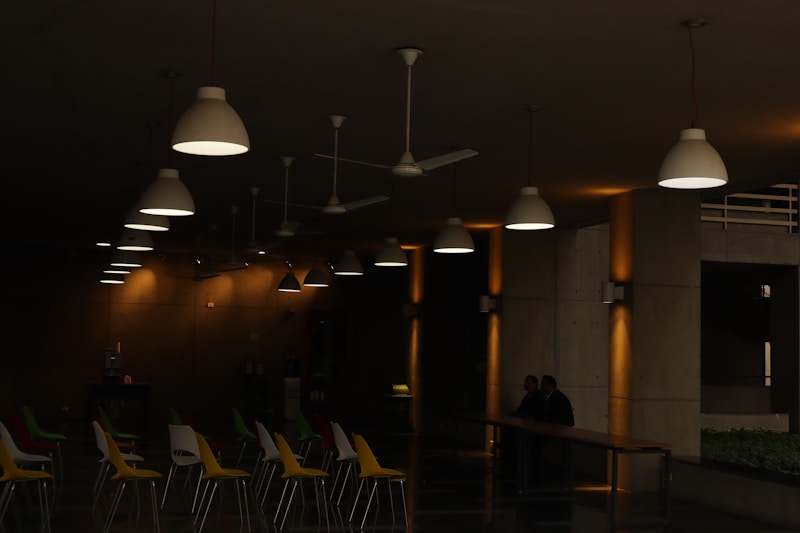Understanding the Definition of Ambient Lighting: A Comprehensive Guide
Understanding the Definition of Ambient Lighting: A Comprehensive Guide
Ambient lighting is an essential aspect of interior design, creating an atmosphere and ambiance for any space. Defined as the natural or artificial light that fills a room and sets the overall tone, ambient lighting is crucial for both aesthetic and functional purposes. In this article, we’ll explore the definition of ambient lighting, its importance in various settings, and how to effectively implement it in your home or office.
The Essence of Ambient Lighting
At its core, the definition of ambient lighting is about creating a uniform source of illumination. Unlike task lighting that focuses on specific areas for activities like reading or cooking, or accent lighting that highlights artwork or architectural features, ambient lighting envelops the entire room. This type of lighting is critical for enhancing visibility and improving comfort, especially in spaces where people gather.
Types of Ambient Lighting
Understanding the different types of ambient lighting can help you choose the right solution for your space:
| Type | Description |
| Natural Lighting | Sunlight that enters through windows or skylights. |
| Ceiling Fixtures | Mounted lights like chandeliers, flush mounts, or pendant lights. |
| Table and Floor lamps | Freestanding or tabletop lamps that provide light and add to decor. |
| Wall sconces | Lights mounted on walls, providing even illumination. |
| Recessed Lighting | Lighting fixtures installed in the ceiling that produces subtle, distributed light. |
Importance of Ambient Lighting
Ambient lighting plays a vital role in creating comfort and enhancing the aesthetic appeal of a space. Here are some significant benefits of incorporating effective ambient lighting:
- Improves Visibility: Proper ambient lighting ensures that the entire room is well-lit, allowing individuals to navigate freely without strain.
- Sets the Mood: The right lighting can create an inviting or dramatic atmosphere, influencing the overall feel of a space. Use soft, warm lights to promote relaxation in living areas or cooler tones for a more vibrant setting.
- Enhances Decor: Ambient lighting enhances the colors and features of a room, drawing attention to decor elements without being overwhelming.

Choosing the Right Ambient Lighting for Your Space
Choosing the right ambient lighting is essential for achieving the desired effect in any room. Here are some tips to keep in mind:
- Consider the Room's Purpose: Different rooms require different lighting. For example, a home office may need brighter overhead lights, while a bedroom might benefit from soft lamps.
- Layer Your Lighting: Use a combination of ambient, task, and accent lighting to create a well-balanced space. This layering technique enhances versatility and functionality.
- Choose Dimmable Options: Installing dimmer switches allows you to adjust the intensity of your ambient lighting, creating adaptable environments for various activities.
Common Sources of Ambient Lighting
When looking for ways to introduce ambient lighting into your space, consider the following sources:
- Natural Light: Make the most of daylight by utilizing large windows and reflective surfaces.
- LED Bulbs: These energy-efficient bulbs are versatile and available in various colors, making them ideal for creating an inviting atmosphere.
- Candles: For a touch of warmth and romantic ambiance, strategically place candles around your space.
Ambient Lighting in Different Settings
Understanding how to use ambient lighting in various environments can help you optimize the spaces you inhabit. Let’s explore how this lighting technique is applied across different settings:
In Residential Spaces
In homes, ambient lighting is often achieved through a combination of ceiling fixtures, lamps, and natural light. For example:
- Living Room: A combination of recessed lights and Floor lamps creates a welcoming atmosphere for relaxation and social gatherings.
- Kitchen: Overhead fixtures paired with under-cabinet lighting provide functional yet comfortable illumination for cooking and dining.
- Bedroom: Bedside lamps and dimmers allow for soft lighting, promoting restful sleep.
In Commercial Spaces
Ambient lighting holds equal significance in commercial environments. In offices, for instance:
- Creates a Productive Atmosphere: Proper ambient lighting can boost employee productivity and morale.
- Professional Meetings: Adjustable lighting in conference rooms accommodates different activities, from presentations to discussions.
- Welcoming Reception Areas: Soft ambient lighting in lobbies can provide a warm welcome to visitors and clients.
Conclusion: The Impact of Ambient Lighting
In summary, the definition of ambient lighting encompasses a crucial part of interior design, affecting both Aesthetics and functionality. By understanding its importance and how to integrate different sources of ambient light effectively, you can enhance the overall atmosphere in any space. Remember that lighting is not just a utilitarian fixture; it significantly impacts our moods, well-being, and the overall aesthetic of our environments. Pay careful attention to your ambient lighting choices, and you may find that they transform your spaces into delightful havens.
As you embark on your ambient lighting journey, consider consulting with a lighting designer to ensure you find the ideal solutions tailored to your needs. Happy lighting!
